Category Archives: Featured

Fishing quota increases should be ‘welcomed by everyone’, industry says
There is positive news for the local fishing industry after a number of quota increases were confirmed for 2024. Commercially important fish stocks such as whiting (+124 per cent), haddock (+74 per cent), herring (+29 per cent), saithe (+25 per cent) and cod (+15 per cent) are all increasing. Shetland Fishermen’s Association (SFA) chair and Alison Kay skipper James Anderson said it was a statement of confidence in the condition of Scotland’s seas. “These 2024 quota increases are very much welcomed by Shetland’s family-owned fishing fleet, and should be welcomed by everyone – not just for the benefits that fishing brings to our islands, but for what it tells us about the state of our seas: the reality is that fish stocks are thriving,” he said. more, >>click to read<< 08:40
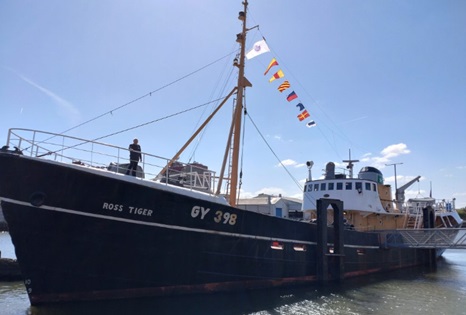
What a year it’s been for historic trawler Ross Tiger!
From reopening to the public in March following vital deck works, to celebrating 30 years as a museum ship at Grimsby Fishing Heritage Centre, it really has been a busy but positive time for the iconic ship. Standing proud in the Alexandra Dock, she has welcomed visitors, young and old, from far and wide, for three decades. Fishing is still seen as one of our most dangerous peacetime occupations, and today, Ross Tiger is a fitting tribute to the hard work and dedication of Grimsby’s brave fishing pioneers. Photos, Video, more, >>click to read<< 09:55
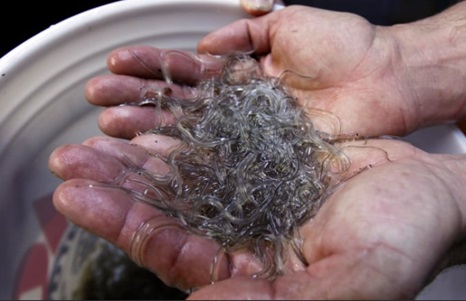
Tonnes of elvers were poached in 2023, but border agents didn’t find any
The disclosure came from Daniel Anson, the agency’s director of general intelligence and investigations, during a recent appearance before the standing Fisheries and Oceans Canada parliamentary committee examining illegal, unreported and unregulated fishing. “We have not had any seizures of elver eels this specific year. We have effected a variety of different examinations to ensure compliance and have not found anything that was illicit or destined abroad that had been harvested illegally or the result of unreported fishing,” Anson testified last week. That was greeted with scorn by one Nova Scotia MP. Elvers are Canada’s most valuable seafood species by weight, fetching up to $5,000 per kilogram. more, >>click to read<< 11:53

Miss Trish II plans harbor protest of onerous fishing rules
Capt. Lenny Russo of the 96-foot dragger F/V Miss Trish II said he plans to protest peacefully in Gloucester Harbor on Wednesday afternoon over what he describes as onerous fishing regulations. He is inviting other fishermen to join him. His Gloucester attorney, Stephen Ouellette, said the captain “believes he’s being treated unfairly” by “overzealous law enforcement.” Russo said he plans to head the Miss Trish II to Stacy Boulevard about 4 p.m. Wednesday, wave the American and the “Don’t Tread on Me” flags and protest what he said are unfair regulations. more, >>click to read<< 08:41
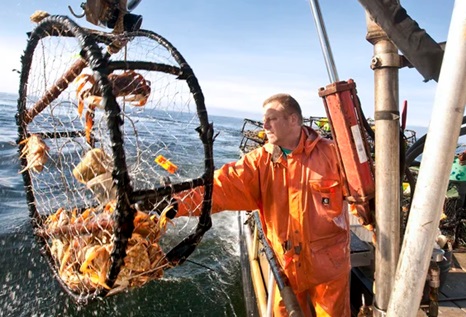
What makes Dungeness Crab Unique
Named after the town of Dungeness, Washington where people first began fishing for these crustaceans in the 1800s, Dungeness crab meat is prized by chefs and seafood connoisseurs alike for its subtle sweetness, and flaky, delicate texture. It’s easy to get lost in the moment when you’re biting into a chunk of delectable Dungeness crab meat. Still, it’s worth pausing to express gratitude toward the crab fishermen (and women) who caught that meal for you. This article covers a lot about these crabs, and you’ll know about a wide variety of crab from Dungeness to King Crab. Dungeness vs. Snow Crab, vs. Stone Crab, Photos, and more, >>click to read<< 16:50
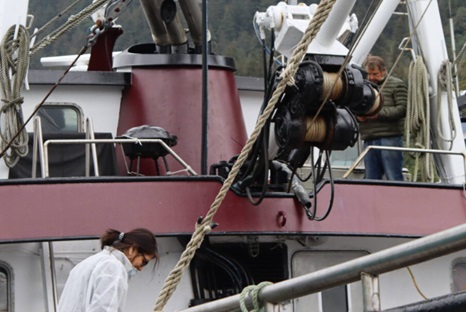
Commercial crab fishery closed for 2023-2024 season
The Alaska Department of Fish and Game has closed the commercial red and blue king crab fishery for the 2023-2024 season, the sixth year in a row, citing stock survey numbers that remain well below the regulatory threshold. The survey estimated 119,000 pounds of legal male red king crab are available for harvest, significantly below the 200,000 pounds required to open the commercial fishery, said Adam Messmer, lead king/tanner crab biologist for ADFG. While that’s an improvement from last year, where the survey estimated 95,000 pounds, improvement does not mean they are a harvestable size, Messmer said. “If they would open up the crab season for 10-15 days it would help bail us out of a terrible season,” said Norval Nelson, owner and operator of Star of the Sea, which was in Aurora Harbor. He made his comments before he learned of the news. more, >>click to read<< 18:24
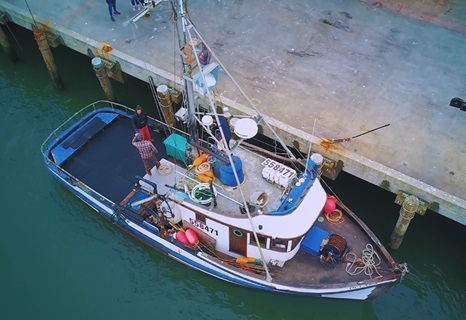
Reopening Areas for Groundfish Fishing After 20 Years
NOAA Fisheries has published regulation changes that will open fishing areas that have been closed for over 20 years. These areas were originally closed in the early 2000s to protect several species of overfished rockfish. With the rebuilt status of almost all these groundfish species, these closures can slowly be opened and allow fishermen greater access to catch healthy fish stocks. The regulations will also close some small areas to protect groundfish habitat, yelloweye rockfish (a species that is still rebuilding), and sensitive areas with abundant coral. These regulation changes are effective on January 1, 2024. Groundfish on the West Coast encompass over 90 species sharing one important trait: at some point in their life, they live on or near the ocean floor. Groundfish are a crucial part of West Coast underwater environments. They act as both predator and prey to different species and help maintain balance in underwater food chains. photos, charts, info, >>click to read<< 11:10

Giving Back: Wenzel uses net gains to help needy
As the son of a carpenter and custom home builder, Brick Wenzel said he hated getting wood splinters in his fingers when he was young. Born and raised in Lavalette, just north of Seaside Heights in Ocean County, he said his fascination with fish began in his early teens. As a young teen, he would collect bait fish and sell them to fishermen around town and party boat fishing captains to earn money, aside from his duties delivering the Ocean County Observer. His lifelong passion for all things fish-related has paid off. In 2018, to give back to the community at large, he founded America’s Gleaned Seafood, a non-profit group that donates leftover fish to area food banks. Offices for America’s Gleaned Seafood are located at the Point Pleasant Seafood Co-Op, which he believes is the oldest farmers’ cooperative in the United States. more, >>click to read<< 08:01
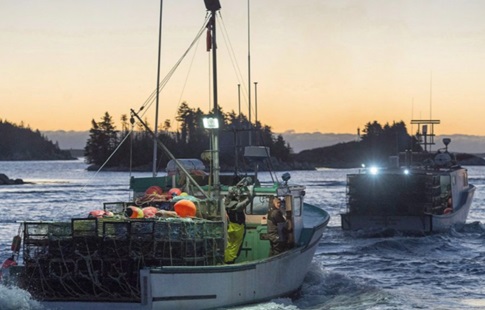
Dumping Day delayed in parts of Southwestern N.S. due to weather
The province’s lucrative lobster fishery is being setback by an approaching weather system. Dumping Day for lobster fishing areas 33 and 34 in Southwestern Nova Scotia typically take place on the last monday of November. While LFA 33 area fishers took advantage of a two-day flexibility window and started the season early Sunday, officials in LFA 34 say they’ll hold off until at least Wednesday. While it is a big day for a major industry in our province, government is stressing the importance of safety as fishers head out on the water. >>click to read<< 07:37
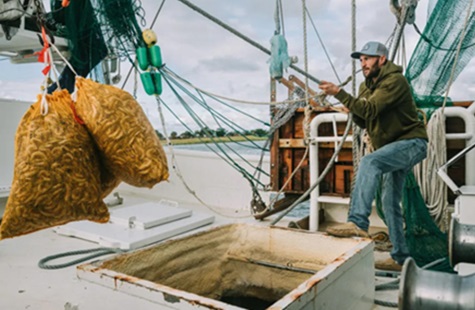
Coastal Georgia shrimpers fear loss of industry as foreign seafood crowds market
“Just when you think it can’t get any worse, it gets worse,” said Pat Mathews, the owner of the Lazaretto Packing Co. on Tybee Island, as he walked away from a truck idling in the loading zone. Early on a Monday morning in October in the height of shrimp season the driver had come to pick up a load of freshly caught shrimp from the James W. Salyers, a shrimp boat captained by David Attia. The driver delivered disappointing news, informing Pat that this would be the last load he would be able to pick up for the foreseeable future. The Mathews family has been in the seafood business for over a century. Where they once owned several seafood markets, their business now centers on the dock they own at Tybee, one of the few hubs of the industry that has been an iconic business on Georgia’s 100-mile coast. >>click to read<< 10:53
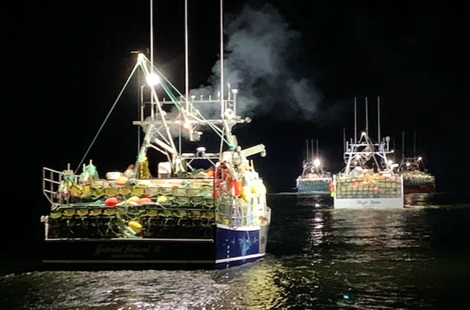
Safety paramount for lobster season opening in southwestern N.S.
Opening day protocol for the two lobster fishing districts dictates that any winds above 26 knots will delay the scheduled season start of the lobster fishery. Last season, LFA 33 opened after a one-day delay, while dumping day in the LFA 34 opening was delayed by a week. “The decision on whether to advance or delay the opening date considers weather forecasts provided by Environment Canada and advice from the LFA advisory committees,” says Sankey. Opening day protocol for the two lobster fishing districts dictates that any winds above 26 knots will delay the scheduled season start of the lobster fishery. Last season, LFA 33 opened after a one-day delay, while dumping day in the LFA 34 opening was delayed by a week. Photo’s, >>click to read<< 12:27

A Sinking Trawler Is Saved
When Capt. Chuck Morici’s boat was sinking 15 miles from Montauk Point on Nov. 15, he did what people do in 2023: He made a short video. Orange haze from a smoke flare he had thrown in the water swirled around the boat. He pointed the camera below deck to show water, rising rapidly. “There she goes. I just want to cry. We’re going down.” Minutes later, after the Coast Guard had arrived, he made a second video. “You might not like the Coast Guard when they measure your fish, but you sure like them when they show up and save your ass,” he said before panning to a Coast Guardsman descending below deck. “I was fishing next to Capt. Dave Aripotch in heavy currents. I told him I was having trouble and asked him to come pick up my crew. I put them in survival suits immediately. Dave backed up, stern to stern, and he took care of my guys.” >>click to read<< 15:21
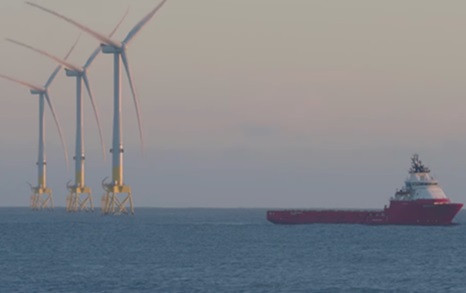
Ringside View: Offshore Wind is a Financial and Environmental Catastrophe
It’s about time Californians of all ideological persuasions wake up and stop what is possibly the most economically wasteful and environmentally destructive project in American history: the utility scale adoption of offshore wind energy. The California Legislature intends to despoil our coastline and coastal waters with floating wind turbines, 20+ miles offshore, tethered to the sea floor 4,000 feet beneath the waves. Along with tethering cables, high voltage wires will descend from each of these noisy, 1,000 foot tall leviathans, but we’re to assume none of this will disrupt the migrations of our treasured Cetaceans and other marine and avian life, not the electric fields emanating from hundreds (thousands?) of 20+ mile long live power lines laid onto the ocean floor, nor from the construction, the maintenance, or the new ports, ships, and submersibles. >>click to reafd<< 10:57
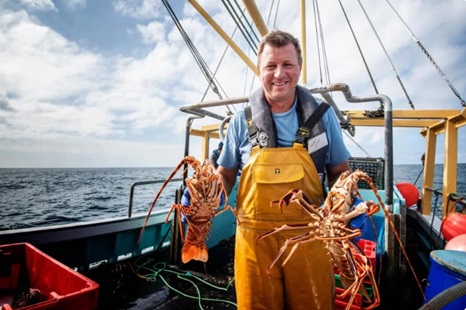
Cornish fishermen lead on national policy change
Two years ago, the Cornish Fish Producers Organisation went above national regulation and pioneered a voluntary measure to protect crawfish stocks. Since then, Cornish fishermen have been calling for the government to bring in a higher minimum size for catching crawfish as national policy. Earlier this week, the Marine Management Organisation (MMO) revealed their decision to introduce the measure. Aiden Mcclary, 23-year-old fisherman from St Ives, doesn’t mind taking the economic hit if it sustains the stock of Crawfish He said: “We don’t want history repeating itself. Years ago, back when my dad was fishing, there was a massive crawfish stock but it was wiped out because of a lack of management in place. >>click to read<< 09:55
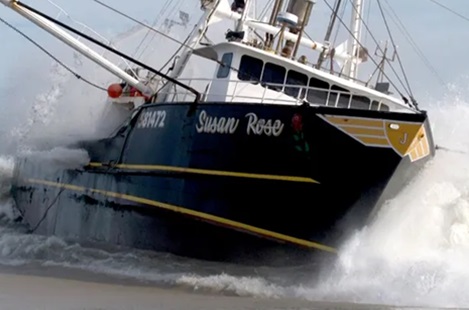
Commercial fishing boat Susan Rose grounded at Point Pleasant Beach – Photos
A commercial fishing boat that beached here early Friday morning drew a crowd of curious onlookers on what was a sun-splashed fall day. The boat is a 98-foot commercial trawler that a witness says was approaching the Manasquan Inlet but instead it came ashore at the north end of Point Pleasant Beach. The boat is named Susan Rose and hails from Port Judith, Rhode Island, according to MarineTraffic.com, which monitors boat traffic, and commercial fishermen from the Point Pleasant Fishermen’s Cooperative Dock. Capt. Jim Lovgren, who sits on the Co-op’s executive board, said the boat is part of The Town Dock fleet in Narragansett and is here in New Jersey fishing for sea bass and fluke, and has been delivering its catch to the co-op dock. The Town Dock was not able to be reached for comment. 8 photos, >>click to read<< 14:34
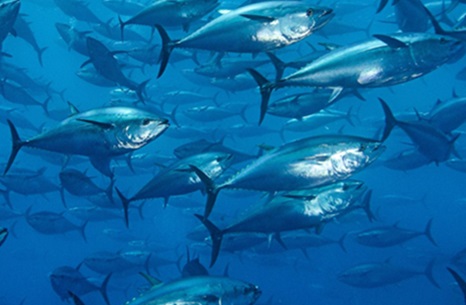
Bluefin Tuna Get It On off North Carolina
In November 1981, a fleet of briefcase-toting lobbyists, scientists, and political negotiators gathered in sunny Tenerife, Spain, to decide the fate of Atlantic bluefin tuna. Representing more than a dozen countries, including Canada, the United States, Spain, and Italy, the besuited men knew crisis loomed. Since the early 1970s, rising global demand for bluefin flesh had spurred fishing fleets—hailing from ports on both sides of the Atlantic Ocean—to kill untold thousands of the wide-ranging predator every year. Under this heavy fishing pressure, primarily driven by the Japanese appetite for sushi-grade tuna, the species careened toward collapse. During the meeting in Tenerife, the American delegation to the International Commission for the Conservation of Atlantic Tunas proposed a disarmingly simple solution: they would draw a line down the middle of the Atlantic Ocean and split the bluefin into two separate stocks. >>click to read<< 08:19
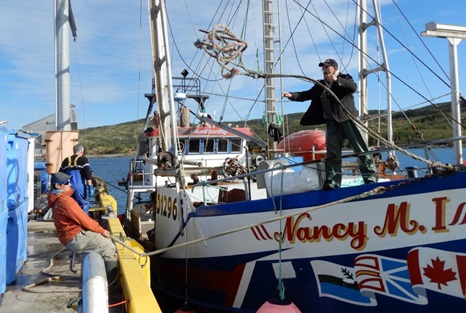
Northern cod numbers may have moved out of critical zone, says federal scientist
Captain Alex Saunders has more experience fishing northern cod than most fishermen. At 81 years old, the fishing captain has fished for cod off the Labrador coast for six decades. This year, he says, was a banner year for that fishery. “There were no codfish in northern Labrador for about 60 years, but this summer the cod were all along the Labrador coast from Blanc Sablan in the south to north of Nain,” Mr. Saunders says. A good catch rate this season meant Mr. Saunders’s crew hauled in 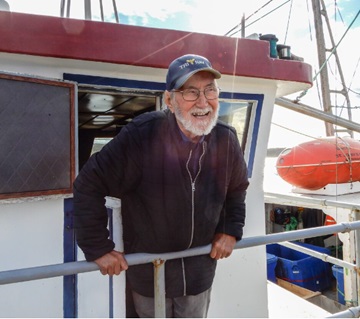 gillnets every day for weeks, returning to communities such as Pinsent’s Arm, a fishing town of about 50 people along the Labrador coast, to land cod at the wharf. But the season’s quick success also meant its early closing. “On a Friday afternoon they said, ‘Get your gear out of the water Sunday by six o’clock,’” Mr. Saunders says of the Department of Fisheries and Oceans’ (DFO) decision to shut down the fall northern cod stewardship fishery weeks earlier than planned – a measure to ensure fishing did not exceed season limits. Photos, >>click to read<< 08:33
gillnets every day for weeks, returning to communities such as Pinsent’s Arm, a fishing town of about 50 people along the Labrador coast, to land cod at the wharf. But the season’s quick success also meant its early closing. “On a Friday afternoon they said, ‘Get your gear out of the water Sunday by six o’clock,’” Mr. Saunders says of the Department of Fisheries and Oceans’ (DFO) decision to shut down the fall northern cod stewardship fishery weeks earlier than planned – a measure to ensure fishing did not exceed season limits. Photos, >>click to read<< 08:33
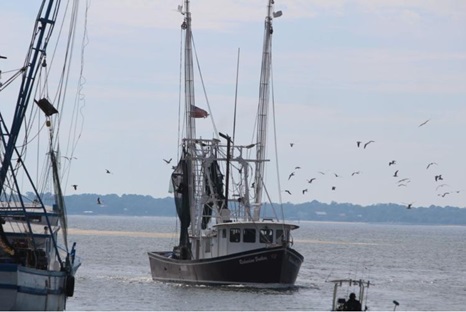
The Fleet fights back: Fishermen unite to curb shrimp dumping
Mount Pleasant’s Economic Development Committee met on Nov. 6 and voted in favor of the proposed economic disaster declaration from the South Carolina Shrimper’s Association and Southern Shrimp Alliance that asserts the Mount Pleasant shrimping fleet can’t sustain itself due to the harmful impacts of shrimp dumping, or the flooding of the market with imported, non-domestic shrimp. Mount Pleasant is the second municipality in South Carolina to declare a state of economic disaster for the domestic shrimping industry. Bryan Jones, vice president of the South Carolina Shrimper’s Association, said the declaration is more than symbolic — it’s one crucial part of a fight that is bringing fishermen from across the Southern United States together to defend their businesses, livelihoods and the shrimping industry as a whole. >>click to read<< 12:40
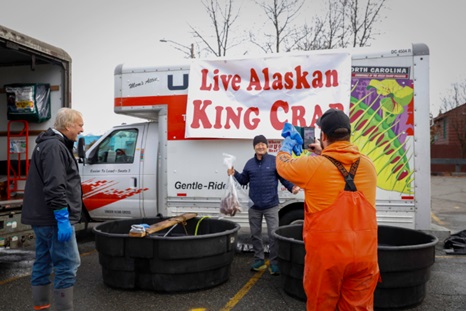
Alaska crabbers get creative with pop-up sales, but industry’s fate uncertain
With Alaska’s Bering Sea snow crab fishery shut down for the second year in a row, crabbers are having to make tough decisions and find creative ways to earn income, like selling direct to Anchorage consumers, sometimes in parking lots. A hand-painted sign on an Anchorage street corner and a hanging sign with the words “Live Alaskan King Crab” were enough to draw in customers to a Spenard parking lot that had become home to one of the shellfish pop-up sales. The live crab sale was in its fourth day on Nov. 2 and had already sold more than three-quarters of the 700 red king crabs hauled out from the Bering Sea. In an attempt to make up some lost income, third-generation fisherman Gabriel Prout brought red king crab to Anchorage to sell directly to consumers. Photos, >>click to read<< 09:16

Breaking: Canastras buy vessels, permits from Blue Harvest bankruptcy
The owners of New Bedford’s seafood auction, closed a deal to buy out groundfish giant Blue Harvest Fisheries from bankruptcy, a move finalized Wednesday with the approval of a federal judge. After a short bidding war, Cassie Canastra submitted the highest bid of $12 million on Monday, beating out the second-highest bid from O’Hara Corporation, which is a part owner of New Bedford-based Eastern Fisheries, by $750,000. The sale includes “all the vessels, all the permits” that once belonged to Blue Harvest Fisheries. It includes eight vessels and 48 state and federal fishing permits, representing about 13% of all Northeast groundfish permits or about 250 million pounds of quota for the current fishing year. >>click to read<< 14:22
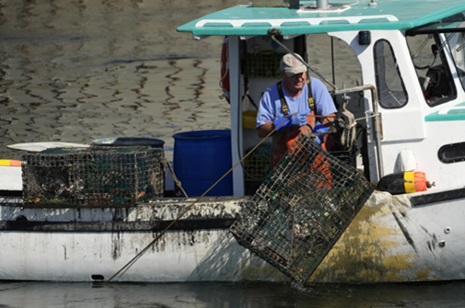
Lobstermen watching closely as federal regulators refine area for potential offshore wind
Lobster fishermen are watching closely as regulators continue to refine an area in the Gulf of Maine that could be used for offshore wind development, and they’re looking for more reassurances that the federal government will avoid popular fishing grounds. The federal Bureau of Ocean Energy Management has identified a 3.5 million acre draft area off the coasts of Maine, New Hampshire and Massachusetts that could be used for commercial offshore wind development. That proposed area excludes most of Lobster Management Area (LMA) 1, a popular offshore fishing area in Maine. But Zach Jylkka of the Bureau of Ocean Energy Management said some fishing grounds near or part of LMA 1 are still being studied and may be up for consideration, because they would be less expensive to develop. >>click to read<< 21:50
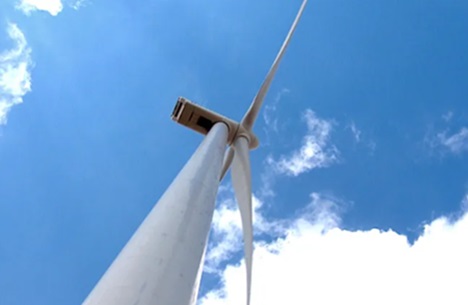
Fishermen in Maine lobbied to keep wind farms out of crucial fishing grounds. Will it happen in N.S.?
A no-compromise lobbying campaign by Maine lobster harvesters has helped keep wind farms out of a crucial lobster fishing area in the Gulf of Maine. And that has some fishermen in Nova Scotia casting an envious eye south of the border. “I’m pleased to see that happen in Maine. We’d like to see the same sort of diligence taken in Nova Scotia,” said Tommy Amirault, a fisherman from Pubnico and president of the Coldwater Lobster Association. “Maine obviously has concerns. It would be nice to 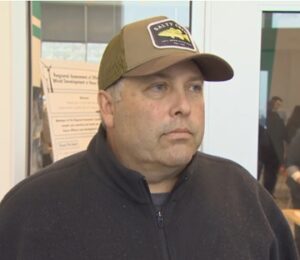 see both provincial and federal governments take our concerns into practice,” Amirault said. “We didn’t mince words that we opposed offshore wind anywhere in the Gulf of Maine. It’s one of the most productive ecosystems in the world. And we really didn’t think that this is the place to solve the renewable energy crisis,” said McCarron. In Nova Scotia, the process has just begun. He said it’s no surprise fishermen have concerns about where it happens. >>click to read<< 06:57
see both provincial and federal governments take our concerns into practice,” Amirault said. “We didn’t mince words that we opposed offshore wind anywhere in the Gulf of Maine. It’s one of the most productive ecosystems in the world. And we really didn’t think that this is the place to solve the renewable energy crisis,” said McCarron. In Nova Scotia, the process has just begun. He said it’s no surprise fishermen have concerns about where it happens. >>click to read<< 06:57
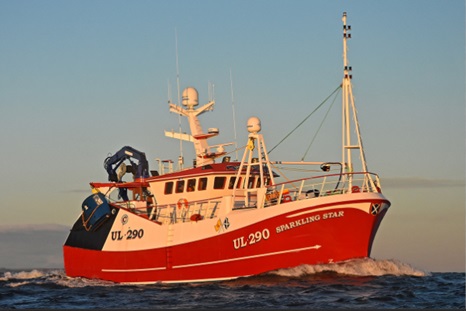
Quiksling proves its worth
The Quiksling retrieval device developed by George West proved its worth last summer when one of the crew of Scottish trawler Sparkling Star was caught in the gear when shooting away and pulled overboard. ‘Quick thinking by Ryan getting the Quiksling to him and lifted back aboard with the powerblock saved that lad’s life,’ skipper James Corbett reported. ‘It was a textbook recovery by the boys that just demonstrates the importance of proper training.’ >>click to read<<, and more here 06:47
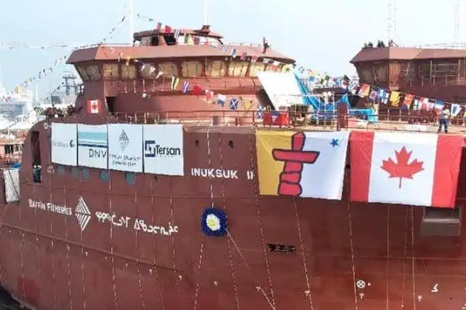
Canada’s Largest Fishing Vessel Floated Off
The latest fishing vessel for Canada has been launched for outfitting at the Tersan yard in Turkey. Inuksuk II is being built for Baffin Fisheries and is scheduled for delivery in mid-2024. Designed by Skipsteknisk, the 80-metre Inuksuk II will have capacity for 1320 tonnes of frozen Greenland halibut in its refrigerated fishroom, or can switch to shrimp fishing, capable of holding 930 tonnes of frozen shrimp product. ‘This is a great milestone towards the delivery of Nunavut’s first new fishing vessel,’ said Baffin Fisheries chairman Sandy Kautuq in Clyde River. >>click to read<< 08:03






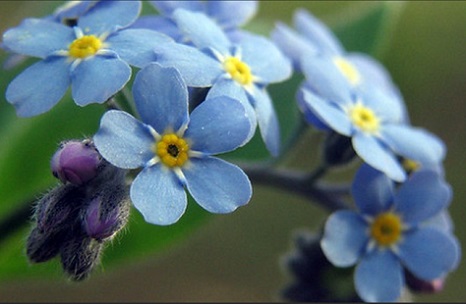
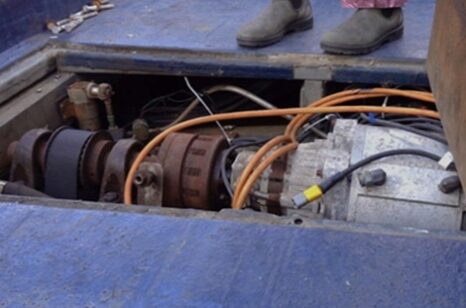
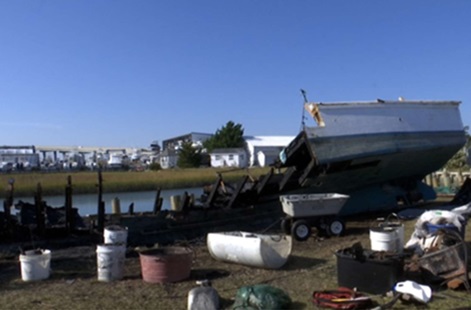
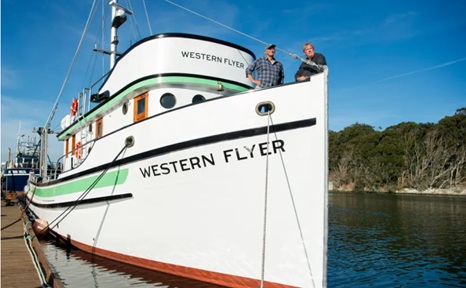

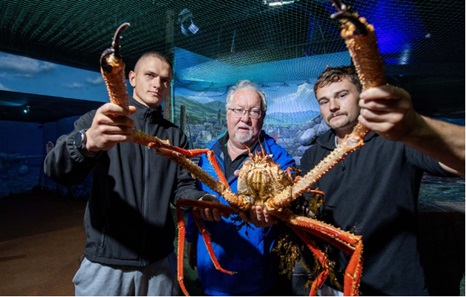





























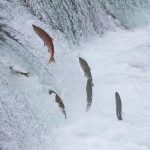
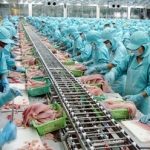
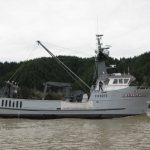
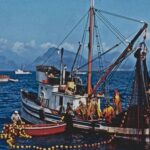
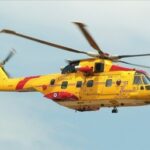
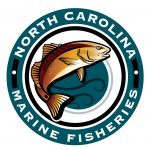



Fishermen submit hundreds of comments on leasing Gulf of Maine for offshore wind
During the 33-day comment period, BOEM held six online meetings Nov. 1-3 to discuss the draft areas and three proposed secondary areas not included in the draft, and to answer questions and hear feedback from specific stakeholder groups, such as commercial and recreational fishermen, environmental nonprofits and the shipping and transportation sector. So, what did everyone have to say? When it comes to commercial fisheries, gaps in the data that inform where WEAs will least conflict with fishing remain a top concern, as do the cables running the power to shore. Also of concern are certain quadrants included in the draft WEAs, which some at the meetings said are spawning areas for haddock and redfish. more, >>click to read<< 08:27
Share this post